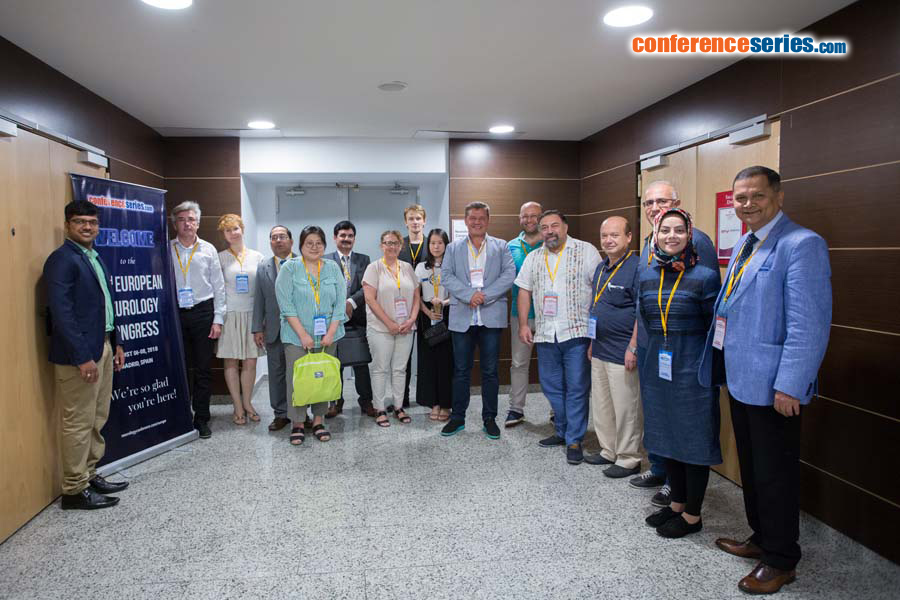Su-Jin Noh
Pohang University of Science and Technology, Republic of Korea
Title: DISC1-deficiency exaggerates cocaine sensitization by disrupting co-repressor complex DRRF-mSinA-DISC1for DRD1 gene
Biography
Biography: Su-Jin Noh
Abstract
Accumulating evidence suggest that disrupted-in-schizophrenia 1 (DISC1) modulates dopamine mediated function and involved in gene transcription in the brain. Our study was focused on these novel functions of DISC1 in the dopamine system. We demonstrated that DISC1-deficient mice showed an increase in dopamine D1 receptor (DRD1) transcripts in striatal region of the brain. DISC1-deficiency resulted in facilitation of the psychostimulant effect of cocaine in DISC1-deficient mice. The dopamine 1 antagonist, SCH-23390 blocked the psychostimulant effect of cocaine in DISC1-deficient mice. To elucidate molecular mechanism of this phenomenon, we characterized a novel co-repressor complex for DRD1 gene locus composed of DRRF-mSin3A-DISC1. First, we could find a novel interaction between DISC1 and DRRF mainly co-localized in the nucleus. We also identified mSin3A binding with DRRF and DISC1, interestingly the binding intensity between DRRF and mSin3A was signifi cantly increased by DISC1 co-expression. Furthermore, we observed an altered dopamine receptor mediated signaling in cultured striatal neurons (DIV 7) from DISC1-deficient mice. The basal level of cAMP and p-ERK were remarkably increased in DISC1 mutant mice. Taken together, we demonstrate a role of DISC1 in the striatum during cocaine sensitization, suggesting distinct mechanism of DISC1 in modulation of dopamine system through DRRF-mSinA-DISC1 corepressor complex for DRD1 gene.
Recent Publications :
1. Shin K Y, Noh S J, Park C H, Jeong Y H, Chang K A, Yoo J, Kim H J, Ha S, Kim H S, Park H J, Lee H J, Moon C and Suh Y H (2016) Dehydroevodiamine•HCl protects against memory impairment and cerebral amyloid-beta production in Tg2576 mice by acting as a beta-secretase inhibitor. CNS Neurol Diord Drug Targets 15(8):935-944.
2. Ryu J, Zhang R, Hong B H, Yang E J, Kang K A, Choi M, Kin K C, Noh S J, Kim H S, Lee N H, Hyun J W and Kim H S (2013) Phloroglucinol attenuates motor functional defi cits in an animal model of Parkinson’s disease by enhancing Nrf2 activity. PLoS One 8(8):e71178.
3. Kopalli S R, Noh S J, Koppula S and Suh Y H (2013) Methylparaben protects 6-hydroxydopamine-induced neurotoxicity in SH-SY5Y cells and improved behavioral impairments in mouse model of Parkinson’s disease. Neurotoxicology 34:25-32.
4. Kopalli S R, Koppula S, Shin K Y, Noh S J, Jin Q, Hwang B Y and Suh Y H (2012) SF-6 attenuates 6-hydroxydopamineinduced neurotoxicity: An in vitro and in vivo investigation in an experimental models of Parkinson’s disease. J
Ethnopharmacol 143(2):686-94.
5. Noh S J, Lee J M, Lee K S, Hong H S, Lee C K, Cho I H, Kim H S and Suh Y H (2011) SP-8203 shows neuroprotective effects and improves cognitive impairment in ischemic brain injury through NMDA receptor. Pharmacol Biochem Behav 100(1):73-80.




